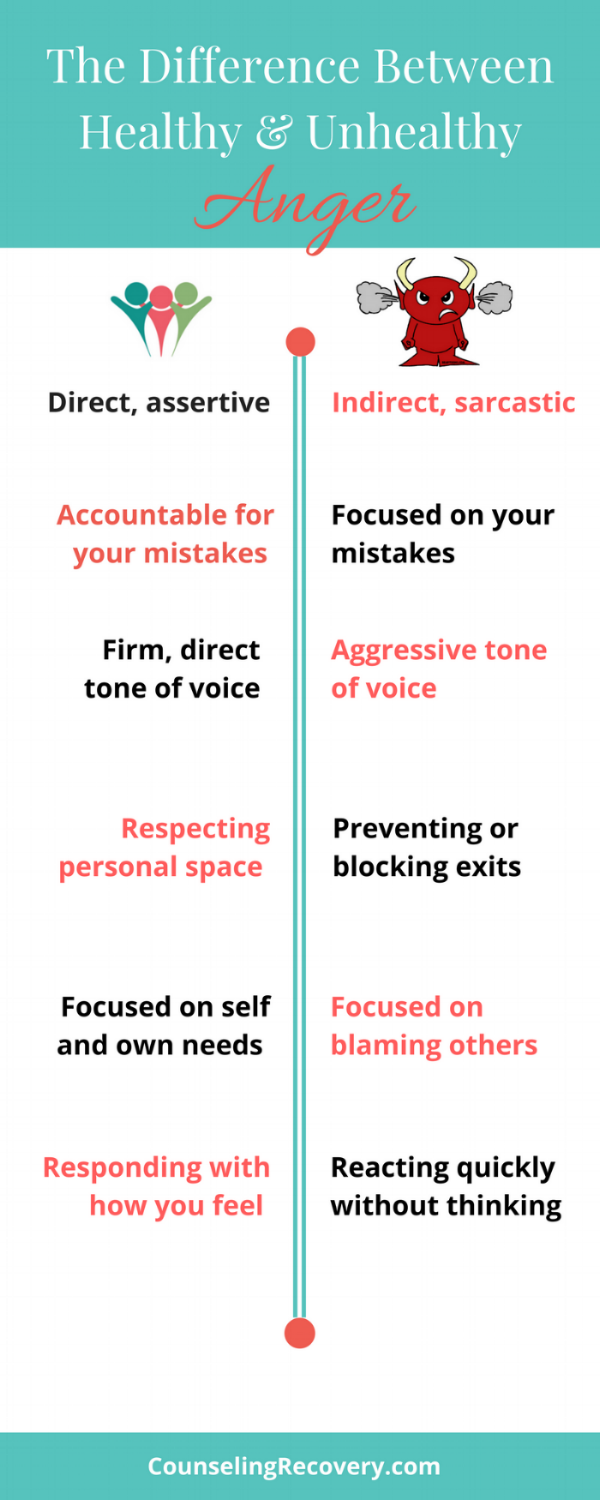How To Transform Unhealthy Anger Into Loving Connection
There are three ways to get in trouble with managing anger. When anger is a problem, you avoid it, stuff it or explode. Stuffing it creates a pile of resentment, and exploding hurts the ones you love. Those aren’t great choices. Relationships suffer when anger is not handled well.
Recognizing what unhealthy anger looks like is the start of healing. You need to know what isn't working before you can change it.
Before we start, a gentle warning.
As you read this blog, please don't go into shame. Unhealthy anger is much more common than healthy anger. You’re here willing to do something different and that takes courage!
Think of what behaviors you need to target first. Learning how to manage anger will show your partner that you care. It sends a powerful message that you are willing to take responsibility for your reactions.
This can be the start of rebuilding trust.
Examples of Unhealthy Anger
Unhealthy anger focuses on blaming others. It makes others feel scared which often leads to abuse and causes them to live in fear.
Some common examples include:
Blaming others and hyper-focusing on what they’re doing wrong.
Yelling, name-calling, insults, and guilt trips.
Destroying things and violating a person’s physical space.
Punishing or avoiding conflict with the silent treatment.
Condescending or aggressive tone which makes others feel less than or scared.
Any form of unwanted touch including hitting, slapping, punching or kicking.
Examples of Healthy Anger
On the other hand, healthy anger transforms relationships because it creates an opportunity to express what's bothering you in a healthy way.
Common examples include:
What is healthy and unhealthy anger?
Being accountable for your behavior.
Use "I" statements to express how you feel without hurting someone else.
Respecting a person’s personal space in order to feel safe.
Admitting when you're upset even if you're not ready to talk.
Healthy anger sounds firm but not scary.
Taking responsibility for your feelings.
As a result, relationships become more authentic because you can say ouch. Not saying that you're hurt or angry is what turns anger into rage or the silent treatment.
Transforming Anger Starts with Your Thinking
People tend to blame their anger on others but actually it starts with how we perceive a situation. In other words, how you interpret what's happening is what causes you to react.
What you think you heard is far more powerful than what is actually said.
This is referred to as “negative self-talk” - those private thoughts you don’t say out loud. They can be about yourself, other people or the world in general.
Examples of negative self-talk messages:
Nothing will ever change, what's the use?
I can't do anything right.
Why can't things go my way?
I can't get anyone to listen to me!
What I want just doesn't matter.
For more on self-talk read What You Need to Know About Self-talk.
Building Loving Connection
Recognizing unhealthy anger has to happen before learning how to control it.
Target the most destructive forms of anger first. For instance, if anger has become physical, focus on stopping those behaviors first. Start by removing yourself quickly to protect yourself and the ones you love.
Click here to read The Rules of an Effective Time-out.
Managing anger effectively means focusing on what you can change, not getting someone else to change.
Healthy anger starts by being willing to walk away to avoid abuse. Let others know beforehand that you’ll leave only for the purposes of calming down. It can’t be an excuse to hang out with friends or drink at the local bar. This begins the process of rebuilding trust and showing your loved ones that their feelings matter!
Final Thoughts
Remember growth is not a linear process. Behavior changes with consistent effort. Catch negative thoughts and defensive reactions early to avoid rage. Angry feelings are not the enemy. They’re trying to tell you something, you just have to listen.
Join me for my free 5 day email course called Catching Your Anger Before It Hurts. Click the image to start now!


